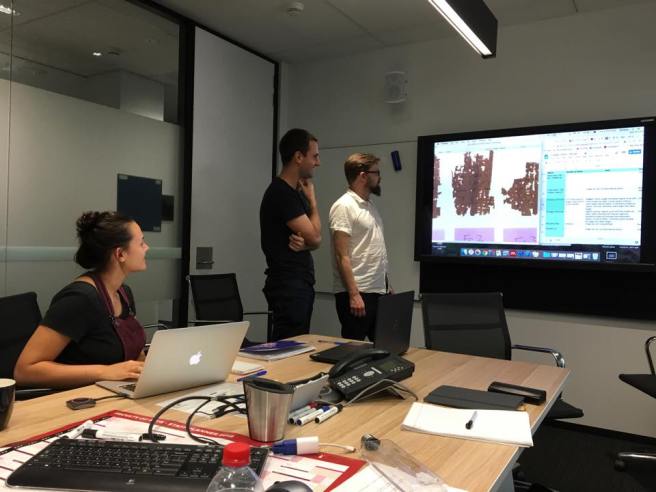Last year I had the opportunity to work as a research intern on the ARC Discovery Project, ‘Forging Antiquity: Authenticity, forgery and fake papyri’ through the Macquarie University PACE program with A/Prof. Malcolm Choat and Dr. Rachel Yuen-Collingridge. This internship exposed me to a wide range of forged manuscripts and allowed me to develop new and existing research skills.
The first forgeries I examined were papyri from the University of Michigan collection. They appeared to be in Greek, but I struggled to make any sense of them. I was relieved to learn soon after that these particular texts were nonsensical and were made to only superficially resemble Greek documents. I learned that many forgeries of this kind were produced and included in auction lots of papyri in Egypt during the 19th and early 20th centuries to enhance their perceived value. I spent much of my time working on the database squinting at high resolution images of papyri, observing fibre direction and searching for traces of ancient ink. I had to consult a wide range of printed and digital papyrological media (occasionally written in Italian, French, Russian or German). By the end of the internship, research assistant Vanessa Mawby and I had collected data for 180 forgeries. Among these were compositions and copied texts written on a variety of materials in Greek, Demotic, Hieratic and Coptic.

My second task was to transcribe one of Constantine Simonides’ forged biblical manuscripts. While Simonides’ hand was relatively easy to read, the text was severely worn or missing in many places. Simonides often misjudges the size of lacunae, including or omitting too much of the text. This was an excellent opportunity, and indeed my first, to study a manuscript in detail, taking into consideration its paleography, materiality and layout.
My final task was to prepare a display and catalogue description for a suspected forgery in the Macquarie collection for the exhibition ‘Faking It: Forgeries and artefacts in dialogue.’ MU2893 is a marble votive tabula ansata commemorating the thanksgiving of a certain Marcus Valerius Parthenius to Urania. If authentic, it likely dates to the third or fourth century CE. In addition to producing arguments for and against its authenticity, I investigated its acquisition and publication history and the market history of tabulae ansatae more generally. Finally, I considered the ethical implications of the item’s purchase on the antiquities market.
As an intern with the project, it was my great pleasure to attend the conference ‘Manuscripts from the Margins: How to edit a forgery’ and the subsequent public day of lectures ‘Faking It’ (Sept. 20–22, 2018). I was pleased to learn more about the increasingly sophisticated methods of today’s forgers, namely their recycling and simulation of ancient mediums. I was inspired by the argument that unprovenanced texts should be flagged as potential forgeries in future editions and avoided by scholars in the formulation of historical arguments.
Of all the lessons I took away from the internship, the most important one was the (often-overlooked) cultural value of forgeries. The finest examples are works of great skill, knowledge and creativity. More importantly, they often offer fascinating insight into how learned individuals and/or their communities have imagined the distant past.
Mark Matic
